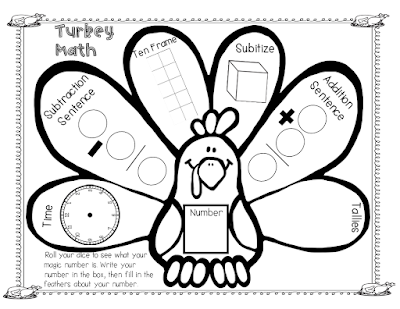Gobble Gobble! It's Turkey Week!
If you want something fun for your students to do for the week before Thanksgiving, you might want to try some of these activities!
Here are some suggested Turkey books that you can read to your class this week:
A Turkey for Thanksgiving by Eve Bunting
Run Turkey Run By: Diane Mayr
Turkey Trouble By: Wendi Silvano
A Plump and Perky Turkey By: Teresa Bateman
The Great Turkey Race By: Steve Metzer
How to Catch a Turkey By: Adam Wallace
I Know an Old Lady Who Swallowed a Turkey By: Lucille Colondro
10 Fat Turkeys By: Tony Johnson
We all know that the week before Thanksgiving can be crazy! But, now you can have something to fill up your week!
Make a Thanksgiving Placemat and write about what we're thankful for:
Make butter with whipping cream! Put your students in a circle and have them shake a mason jar filled with whipping cream for a minute each. Do this around the circle about 4 times! Then, spread the butter on some bread!
Your students can make a turkey disguise and write clues about their disguise on the template below. You can discuss what an inference is and how you can draw conclusions by using clues that the author gives you! You can have your students tell each other their clues and see if they can guess the disguise correctly! Plus, this craftivity looks super cute in your hallway!
I've created a lesson plans with question stems, materials, directions and examples, turkey craftivities, interactive notebook activities in reading, poetry, math and science, and anchor charts! So fun!
Here are the anchor charts for beginning, middle and end, cause and effect, author's purpose, text connections and the parts of a turkey. These anchor charts are also accompanied with interactive notebook activities in reading and science: I've also created a craftivities that are so fun! You create a turkey out of a lunch paper bag, glue on the feathers, eyes, beak, wobble, and then your students can write what they are thankful for on the template and glue it on the bottom of the bag! It turned out so cute! If you wanted to, you could have your students put on a reader's theater play with their paper bag puppets!
Of course this week isn't complete with out some turkey math activities! One activity you can do with your students is this Turkey Math template that is super easy to prep! You can copy it on colored paper and laminate it, and have your students complete it as an independent practice or at your teacher table, or as an interactive notebook!
And, of course the students can write a procedural story about How to Catch a Turkey. I've created a sequence page first, and then the students can rewrite it on their template. I've also added a research page that your students can find information about turkeys by reading a non-fiction turkey book. They really are a fascinating bird!
Here are my turkey resources if you're interested:
I hope you got some great ideas and extension activities that you can try with your class after reading this fun and entertaining book! If you are interested in checking out my Linking Literature packet, click below. Happy Thanksgiving!
Love, Kara






































